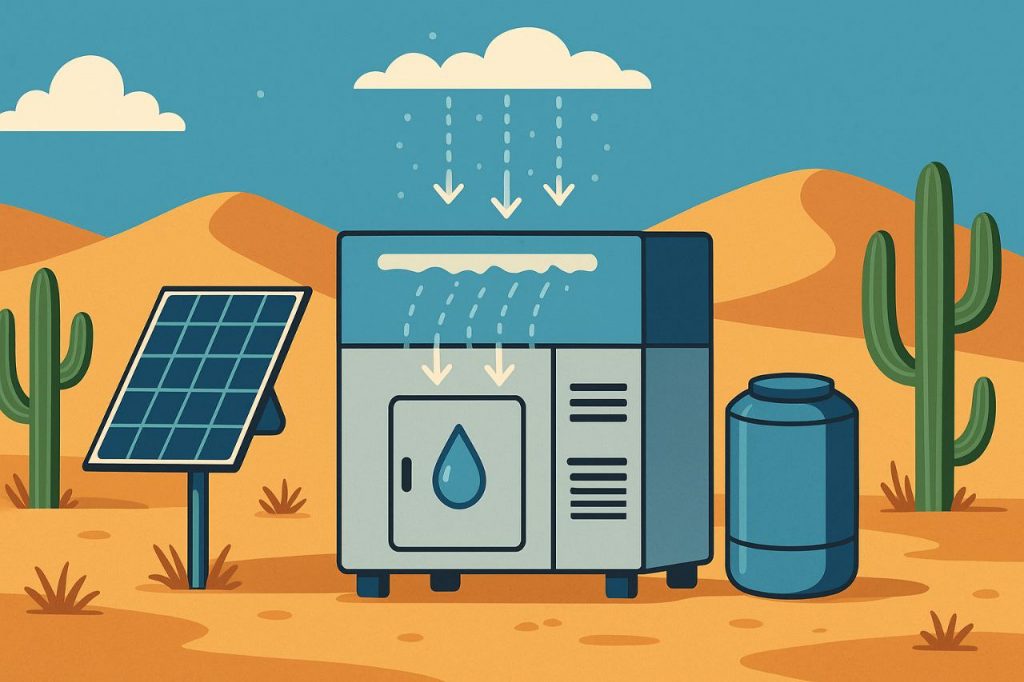In arid regions where freshwater is scarce, such as deserts, atmospheric water generators (AWGs) offer an innovative way to extract drinking water from the air. These systems collect humidity and transform it into clean, usable water—even in some of the driest places on Earth.
What Are Atmospheric Water Generators?
AWGs are machines that condense water vapor from the air into liquid water. The process is similar to how dew forms naturally:
- Air is pulled in and cooled to the point where moisture condenses
- The collected water is filtered and purified
- It is stored in tanks for drinking, irrigation, or other uses
These machines often run on solar or wind power, making them ideal for remote or off-grid desert locations.
How Do They Work in Deserts?
Deserts might seem too dry, but even arid air contains some moisture—especially at night or in early morning hours. AWGs in desert areas:
- Work best during cooler hours when relative humidity is slightly higher
- Use advanced condensation technology to extract water at low humidity levels
- Often include solar panels to generate energy and increase efficiency
- Can be paired with underground storage tanks for community use
Some models even use desiccant materials (water-absorbing substances) to help pull moisture from extremely dry air.
Benefits of AWGs in Desert Regions
Atmospheric water generation can be life-changing in places with no reliable water sources:
- No need for rivers or groundwater
- Produces clean, drinkable water
- Can operate off-grid using solar energy
- Scalable: from small personal units to large village-scale machines
- Reduces dependency on water trucks or long treks to wells
They are especially helpful during droughts or in climate-stressed areas.
Challenges and Limitations
Despite their promise, AWGs also face several obstacles:
- Costly technology, especially for large-scale use
- Efficiency drops in extremely dry or hot conditions
- Requires maintenance and energy, even if solar
- Initial investment is high compared to traditional wells
Ongoing research focuses on improving water yield, energy efficiency, and cost reduction.
Examples of Use
- In the Sahara Desert, experimental farms use AWGs to grow crops
- In Dubai and Israel, prototypes are being tested for emergency use
- Refugee camps and remote military outposts use AWGs for self-sufficient water supply
As technology improves, AWGs are becoming more practical even in hyper-arid zones.
Glossary
- Atmospheric Water Generator (AWG) – A device that extracts water from air humidity
- Condensation – The process of vapor turning into liquid
- Desiccant – A substance that absorbs moisture from the air
- Relative Humidity – The amount of water vapor in the air compared to what it can hold at that temperature
- Off-grid – Not connected to centralized electricity or water infrastructure


